| |
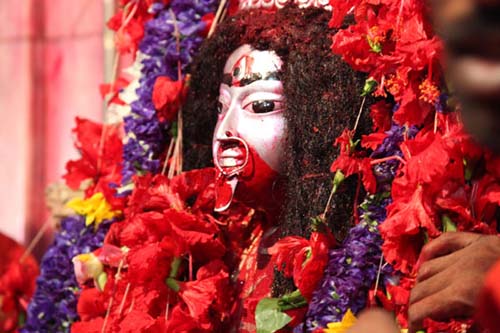 |
Shaped like an isosceles triangle, Birbhum is located to the northern extremity of the Burdwan Division. The district of Birbhum is bounded on the north and west by Santhal Paraganas, on the south by the district of Burdwan and on the east by Murshidabad and Burdwan. The Ajay River separates Birbhum from Burdwan.
The history of Birbhum states that, in the beginning the present Birbhum was included partly in the country, "Rarh" and partly in "Vajjabhumi ". While part of Rarh, was well watered by rivers and rich in alluvial soil, the Vajjabhumi, the country of Thunderbolt, was wilder and rugged. According to the Jaina traditions, during the 5th Century, B.C., Mahavira, the last great Tirthankara, made a travel through these two tracts of land. |
Initially ruled over by the Maurayan Emperors, Rarh came under the rule of the Guptas, of Shasankas and of Harshavardhana and then formed a part of the Pala kingdom. During the middle of 12th Century A.D. it became included in the empire of the Sena kings. The 13th Century A.D. saw the district passing over under the rule of the Muhammedans and after this for many centuries this land was ruled by the Hindu chiefs, called Bir Rajas.
Although until 1787, Birbhum was administered from Murshidabad, later on a separate administration was required and for that Birbhum was joined with Vishnupur and remained like this till 1793. In 1809, Birbhum collectorship was abolished, and in 1820, Birbhum was again constituted as a separate district. It restored to its former area excluding a few estates transferred to the Jungle Mahals. In 1872 the district of Birbhum had a total area of 1,344 square miles. Presently the district covers an area of 4545 Sq. Kms. The important rivers of the district include, the Mor, the Ajay, the Brahmani, the Pagla, the Bansloi, and the Kopai.
The major visiting places in and around the district of Birbhum are:
- Tarapith
- Bolpur
- Sriniketan
- Bakreswar
- Kankalitala
- Labpur
- Nanoor
- Joydev-Kenduli
- Dubrajpur
- Nalhati
- Patharchapuri
- Rajnagar
- Hetampur
|
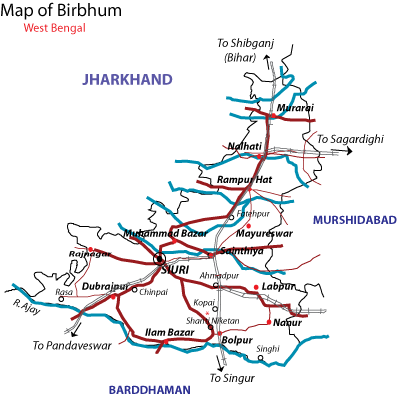 |
Birbhum experiences a dry and mild climate. Generally the hot weather lasts from mid of March to the mid of the June, the cold weather from mid of October to the mid of March while the rainy season is from the mid of June to the mid of October.
About Tarapith
Tarapith, known as one of the SHAKTI PEETHAS, is a holy place for all Hindus where Maa Kali is worshipped as Maa Tara. This is the mahapith where Sadhak Bama Khyapa attained "Siddhi Laav". Every year this sacred place is visited by several millions of devotees who come to offer Puja to Maa Tara.Tarapith is situated at around 300 miles from Kolkata in the state of West Bengal, India. Nestled on the banks of Dwarka river Tarapith has a history of its own. The previous temple of Tarapith which is now buried under the earth was built by Vasistha. The present temple was erected by a merchant, named Joybroto. It is said that Tara Maa came in his dreams and instructed him to unearth the 'brahmashila', or the sacred stone and establish it as a deity in a proper place. Therefore, the shrine of this place is dedicated to the goddess Tara Maa. |
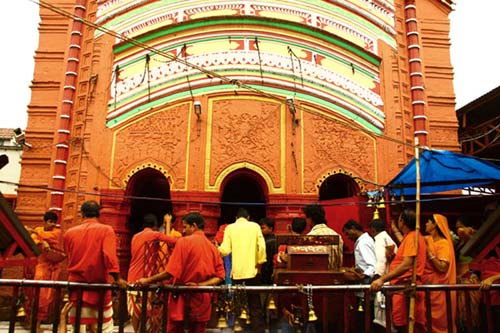 |
Shiva by feeding him Her breast milk. According to the legend when Shiva engulfed the poison to save the earth and was suffering from burns and pains, Maa Kali brought solace to him and saved him by feeding him Her breast milk. The devotees come here to get the cosmic blessings and affection of Tara Maa. The supreme mother protects us from the worldly poison encountered by us at every step of life. Maa Tara with all her motherly affection and blessings strengthens us to overcome the hurdles of life and find peace in life. Known as a famous center for Tantric Hinduism, the temple is the place where Tantric rituals are performed. Some practitioners of Tantrism can be seen near the temple. There is a pilgrims' inn near the temple and the grove, just beside is inhabited by monkeys. The closest Rampurhat Railway Station is at a distance of 8 km north.
Goddess Maa Tara.
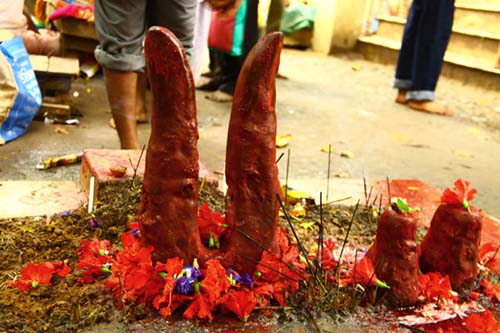 |
Tara Maa is a form of goddess Maa Kali and an embodiment of kindness and "Shakti" or strength. She is believed to destroy all evils. One of the Ten Mahavidyas of Maa Shakti, Maa Tara is worshipped at Tarapith, which is regarded asone of the Shakti Peethams of India.According to Hindu belief, unable to bear the insults made by her father, Dakshmaharaj against her husband Lord Shiva, Sati threw herself at the yagna, beingperformed by her father. At the news of Sati’s death Shiva went mad in anger and started the dance of destruction, the tandava nritya with the body of Sati on his shoulder. To save theworld from coming to an end Lord Vishnu cut the body of Sati with Sudershan chakra into several pieces. The places where the parts of the body of Sati fellhave become
holy places. Temples have been erected on all these places and they arefamous as Shakti Pithas. Located in the 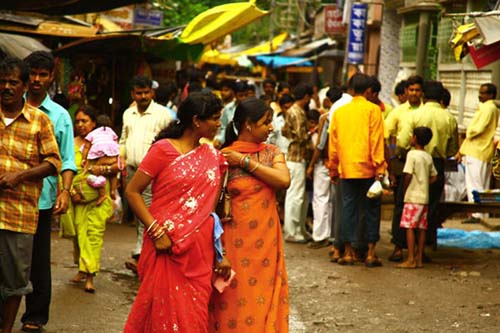
holy places. Temples have been erected on all these places and they arefamous as Shakti Pithas. Located in the Birbhum district of West Bengal, India, Tarapith is a very popular Shakti Pitha where Maa Kali is worshipped as Maa Tara. It is believed that the eyeball of Sati fell in Tarapith. As the eyeball is also known as "tara", the village came to be known as Tarapith which was originally named as Chandipur. According to another legend Tarapith has emerged as a holy place as because Saint Basistha meditated and worshipped the Sati as Tara over here. |
About Bolpur Santiniketan
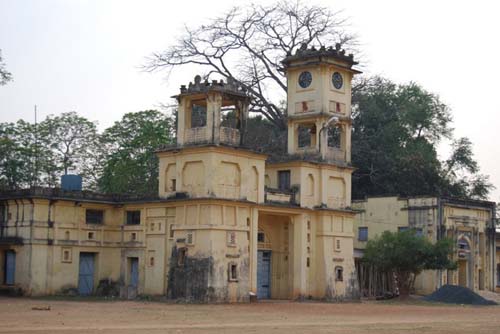 |
Shantiniketan is a tourist attraction also because Rabindranath lived here and penned many of his literary classics (namely Tagore songs, poems, novels etc.) and his home is a place of historical importance.Shantiniketan was earlier called Bhubandanga (named after Bhuban Dakat, a local dacoit), and was owned by the Tagore family. In 1862, Maharshi Devendranath Tagore, while on a boat journey to Raipur, came across a landscape with red soil and meadows of lush green paddy fields. Rows of chhatim trees and date palms charmed him. He stopped to look, decided to plant more saplings and built a small house. He called his home Santiniketan (abode of peace). Santiniketan became a spiritual centre where people from all religions were invited to join for meditation and prayers. He founded an 'Ashram' here in 1863 and became the initiator of the Brahmo Samaj. |
Later on December 22nd 1901, Devendranath's son, Rabindranath Tagore started a school at Santiniketan named Brahmachary Asrama modelled on the lines of the ancient gurukul system. After he received the Nobel Prize which enhanced not only the pride of India but also the Prestige of Santiniketan the school was expanded into a university. It was renamed Visva Bharati, it's symbolic meaning being defined by Tagore as "where the world makes a home in a nest". The aim of this educational institute was the quest for truth, blending the methods of learning of the East and West. Visva Bharati, now more than a hundred years old, is one of the most prestigious universities of India with |
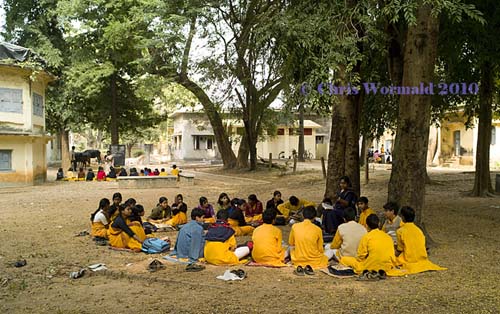 |
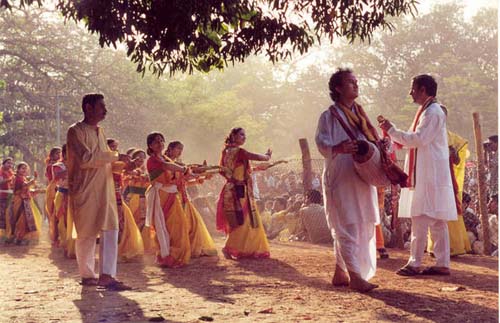 |
degree courses in humanities, social science, science, fine arts, music, performing arts, education, agricultural science and rural reconstruction. At Tagore's behest, the annual Paus utsav became an important cultural event where students and teachers of his school took an active part. Paus Mela, therefore, becomes a meeting ground for urban people and rural folk. Rural artisans bring their wares like batik printed materials, the most famous Santiniketan Leather bags, earthen wares, paintings, etc, to the fair while urban relatives set up stalls so that rural people could buy the new industrially produced goods that was revolutionizing life in the cities. While it has not discarded its traditional value systems the educational system founded by Tagore thus proves to have also kept pace and evolved with changing times.Apart from Visva Bharati the Bengal Institute of Technology and Management (BITM) is also located in Santiniketan - a place you wouldn't readily associate with an engineering college. Even the surroundings are very different from,say, a BE College |
or a Jadavpur University. Situated in the midst of paddy fields along the Sriniketan bypass, seven kilometres from Bolpur, the BITM Santiniketan campus looks desolate and there's hardly any transport connecting the college to the nearest town. But once you enter BITM, it's a different world. You are greeted by huge buildings, gardens, canteens, laboratories and playgrounds that dot the 60-acre campus.Altough the main attraction of this place remains because of its association with Gurudev Rabindranath Tagore (1861-1941), one of Bengal's greatest figures, of course the natural charm of Santiniketan is a major draw in itself. Home at Santiniketan would surely call for peaceful Residential Neighbourhood at Santiniketan amidst the greenery all around.
About Bakreshwar
Bakreswar is a place of great pilgrimage in the district of Birbhum. The village is located about 6 miles to the northwest of Dubrajpur railway station on the Ondal- sainthia railway section of the Eastern Railway. Siuri the district headquarters of Birbhum district is 14 miles from Bakreswar. The village is well connected by roads but there are no regular conveyances. Taxis or bullock-carts are available at Siuri or at Ondal. The State Government of Bengal is now running occasional visits to Bakreswar in well appointed passenger buses for encouraging tourism. There is great potential for developing tourism at Bakreswar because of the temples and the hot water springs of medicinal value. |
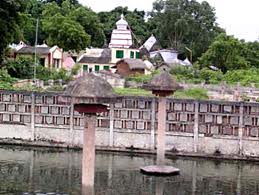 |
Bakreswar does not find place as a Pithasthan or an Upapithasthan in the Tantras. But tradition mentions that many Tantriks have attained Siddhi by their tantrik practices at Bakreswar. Aghori Baba is one of the well-known Tantriks considered as a Sidhapurush of Bakreswar. The antiquity of the place has not yet been fixed. But about its hoary past there could be no doubt. Time has stood still at Bakreswar. |
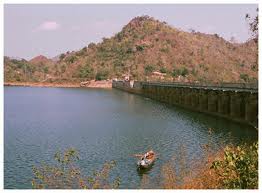 |
About Massanjor
Spending a few days amid the picturesque environ of Massanjor can be a nice getaway from ennui of day to day life. The dam and the hydral-power project on Mayurakshi River and the park adjacent to the dam are very beautiful places to unwind. Other worth visiting places in the neighbourhood are adivasi village of Lampa, two hundred years old Damodar Temple at Siuri and Tilpara Barrage. |
HOW TO REACH
Bus service of Jharkhand State Transport is available from Kolkata to Massanjor via Bardhaman-Siuri. It’s a seven hour journey.
BEST TIME TO VISIT
Rainy season and winter are the best times to enjoy Massanjor |
|
|

